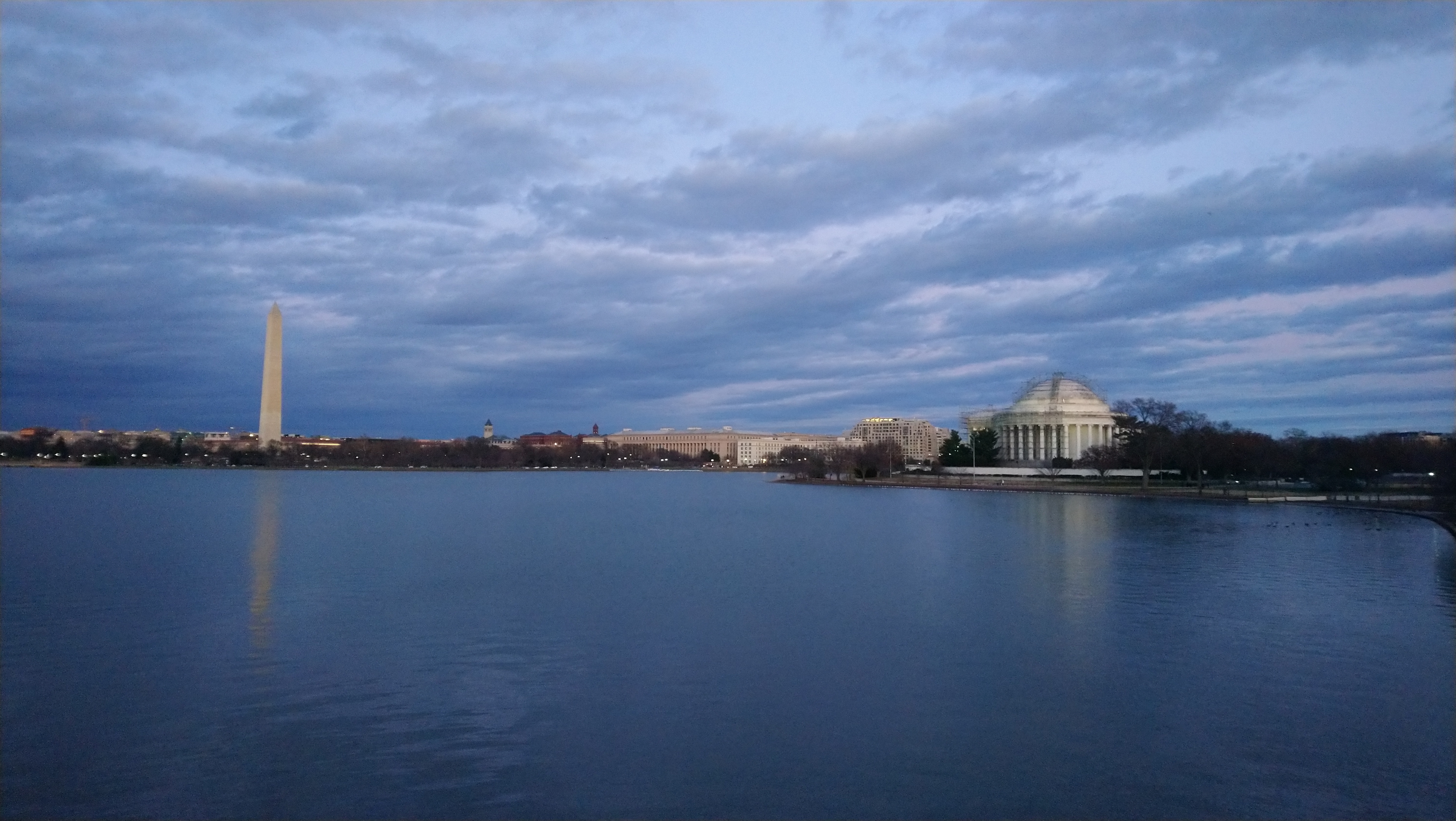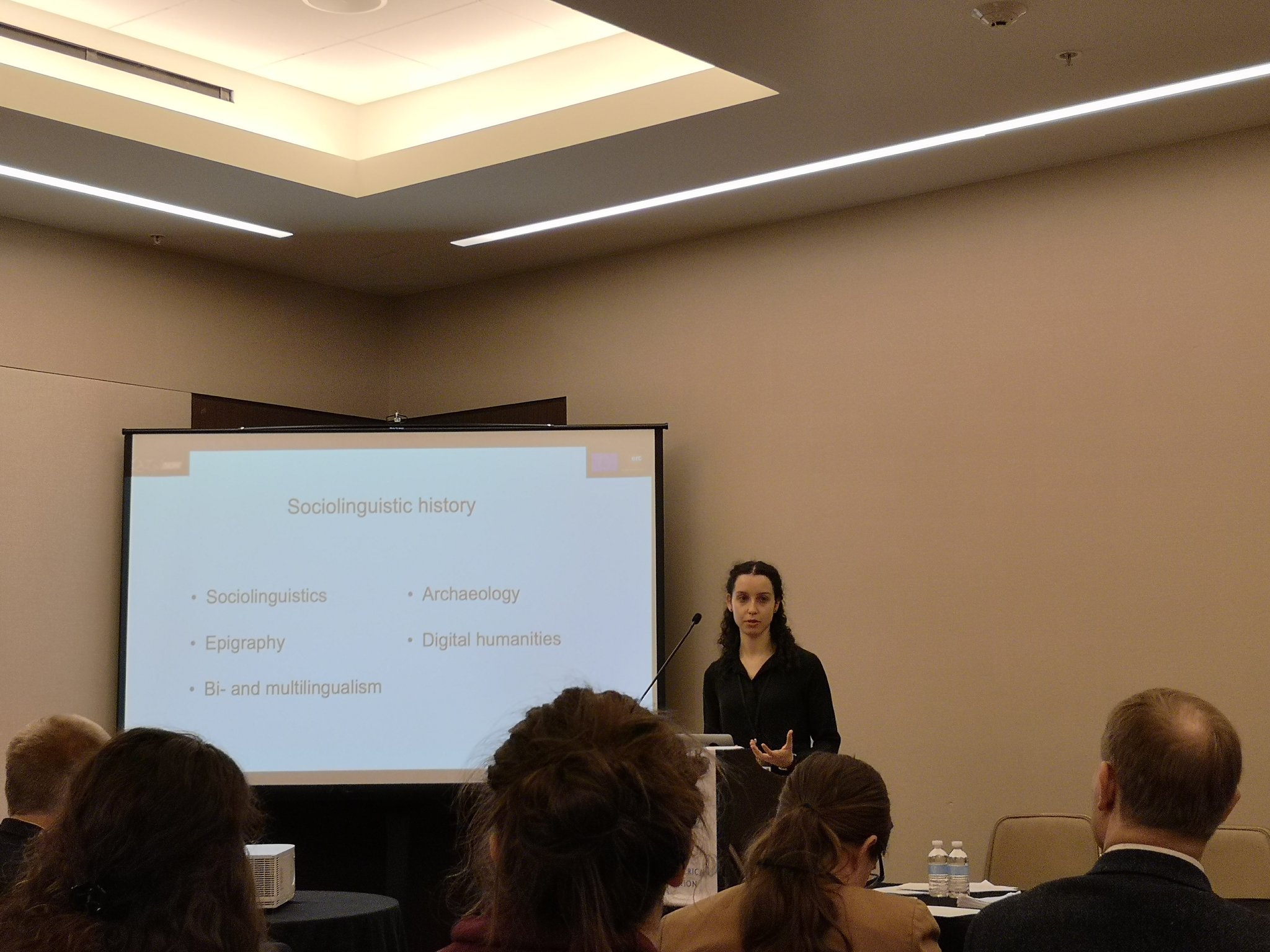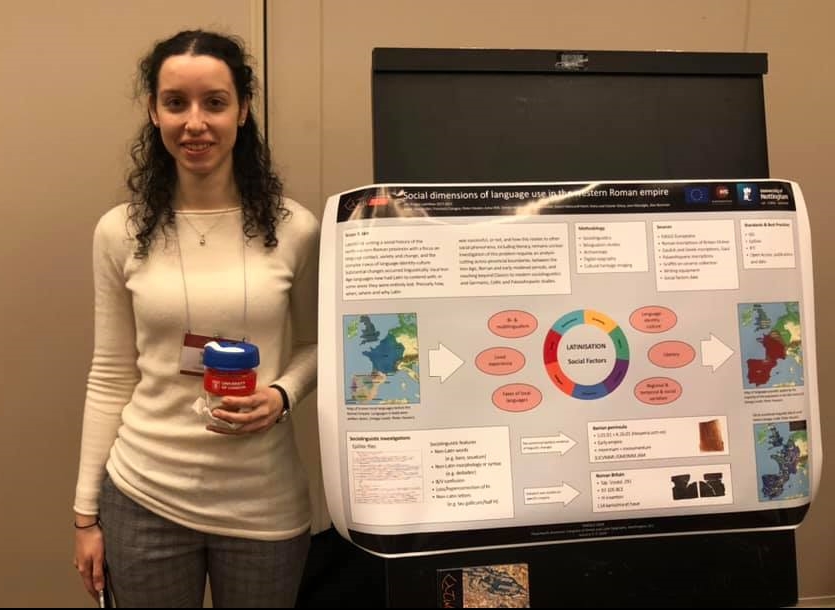By Simona Stoyanova

My work year began in full force in early January in Washington, DC, where I represented the LatinNow team at the Society for Classical Studies Annual Meeting and Conference, followed by the North American Congress for Greek and Latin Epigraphy. Apart from dramatic landscapes and superb museums, DC proved to be an appropriate meeting place for epigraphers with its numerous monumental inscriptions all over town.
To begin with, I was very pleased to hear that, even though this trip was our first presentation of the project outside Europe, plenty of our US-based colleagues of all career levels had heard of us and wanted to talk details – I did not have idle coffee breaks. I was part of a very interesting linguistics panel at SCS a nd presented the only material culture-based paper. There followed a lively discussion and I am happy to report the audience was fascinated by our scope, approach and methodology, especially the application of modern linguistic theory to ancient linguistic material, and the integration of digital humanities. The room was packed – impressive for 8 am on 2nd January. Significant amounts of coffee were consumed.
nd presented the only material culture-based paper. There followed a lively discussion and I am happy to report the audience was fascinated by our scope, approach and methodology, especially the application of modern linguistic theory to ancient linguistic material, and the integration of digital humanities. The room was packed – impressive for 8 am on 2nd January. Significant amounts of coffee were consumed.
After an amazing few days of great papers, catching up with old friends, making new friends, gawking at book stalls, snacking on Institute for the study of the ancient world-stamped M&Ms (true story) and talking all things LatinNow, the SCS came to an end. Which meant a mad dash across town for the beginning of NACGLE, held in leafy Georgetown.
 Each morning, during a session appropriately called Posters and Pastries, I would stand next to our glossy creation (click here to view it) and provide narration and explanation for the various bubbles, boxes and arrows. Some of the most interesting discussions of the entire trip happened in the poster room over a warm drink and a croissant. I was a little star struck to meet and talk in person with scholars I have long admired and extremely chuffed to pass on their praise to the rest of the team back home via WhatsApp. One such person called us a ‘powerhouse’.
Each morning, during a session appropriately called Posters and Pastries, I would stand next to our glossy creation (click here to view it) and provide narration and explanation for the various bubbles, boxes and arrows. Some of the most interesting discussions of the entire trip happened in the poster room over a warm drink and a croissant. I was a little star struck to meet and talk in person with scholars I have long admired and extremely chuffed to pass on their praise to the rest of the team back home via WhatsApp. One such person called us a ‘powerhouse’.
It was great to see more and more research projects taking into consideration texts on non-lapidary materials and looking into the connections between different kinds of literacy within the same urban space. John Bodel’s keynote set the tone with his newly coined term ’epigraphic mode’, emphasising the intention of communication behind a written message, regardless of its support material, placement in space or execution. On a more personal note, I was extremely happy to see that EpiDoc is no longer an exotic term at an epigraphic conference, and to meet a dozen people I’ve trained over the years.
Finally, a para-conference application of expertise was called for at the Library of Congress, when an interested member of the public in the same tour group was asking about mosaic techniques and I was able to offer some details. Much delight and thanks from the tour guide ensued, too. (Impact!)
